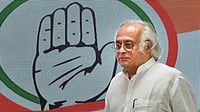King Charles III was proclaimed as the King of the United Kingdom of Great Britain and Northern Ireland on Saturday.
Charles succeeds his late mother Queen Elizabeth II who died on Thursday. She was 96 and reigned for over the 70 years, the longest for any British monarch.
While the UK and several other parts of the world mourn the Queen's death and hail the proclamation of the new King, many parts of the world are still dealing with the shadow of colonialism that fuelled the rise of Britain as a world power.
The British Empire at its height ruled over a quarter of the world's population. Besides economic exploitation, the colonisation involved human rights abuses and massacres that would be unacceptable today, such as the Jallianwala Bagh massacre.
Here we explain the British colonisation exercise, the Western ideas behind it, and list the countries that were once part of the British Empire that gradually attained independence.
The British Empire
The Europeans began carving empires by establishing colonies outside their territories in the 16th century.
While other European powers, such as the French and the Dutch, also had their empires, the British Empire was the most widespread.
The first British colonies were established in North America, which were later expanded to Caribbean islands, Africa, Asia, and the Pacific. The National Geographic Society notes that a quarter of the world's population, approximately 458 million people, lived under it in 1922 at the height of the empire.
The British colonised in two broad ways. One, the settler colonialism in which the British settled and eventually overtook the native people, such as in the Americas. Two, economic colonialism in which they did not overtake the natives but used their resources and labour to enrich their homeland, such as in India and Africa where they exploited the native natural resources and labour.
The motivations for colonisation were varied, ranging from the belief in "white man's burden" which refers to the European belief that they were the civilised people and had to civilise the rest of the world they considered uncivilised. There were also economic and religious motivations, as Christian missionaries often set base in colonised lands. Together, these motivations have often been desribed as "3Gs" — Gold, God, Glory.
Not just the rulers, but the general British public also usually believed in these ideas at the time.
"When the empire was being built, British people largely believed they were doing the right thing. In their eyes, they were improving and developing lands and bringing order to non-white countries which —due to racist attitudes— they thought were ‘uncivilised’ and ‘backward’. The British also believed they were doing the work of God by spreading Christianity – which they considered to be the ‘right’ religion," notes The National Geographic Society.
The long shadow of the British Empire
The colonial influence did not end in a snap as colonies gained independence. Instead, decolonisation is a long and ongoing process even in countries like the United States of America which gained independence much before the other colonies.
Many of the social ills in large parts of the world today can be traced to colonialism, such as from economic inequality between different parts of the world, racism, persecution of native people, erosion of native culture, and gender discrimination.
In Americas, native communities were reduced to a minority. Native people still continue to fight for equality and rights over their resources in the USA and Canada.
In Africa and Asia, the shadow of economic exploitation and seeds of division sown by the British continues to this day.
One estimate says that the British transferred $45 trillion of wealth from India to UK by 1938. The Council of Foreign Relations notes, "The East India Company [and later British government] set regulations on what crops could be grown, where they could be exported, and at what prices they could be sold. It then charged Indians high taxes on the land they worked. Unlike most taxes, which are invested back into society, money made from the East India Company’s taxes flowed back to Britain."
The British reduced India to a source of raw material and eroded its textile output. The British also used money and men from India to further expand the Empire as soldiers were recruited to fight overseas.
Much of the racism today and racial tensions tearing the West is also rooted in colonial practices, most notably of slavery and the European notion of White people's superiority over others.
The Europeans are estimated to have bought and sold 12 million slaves from Africa. Of them, the British share is estimated to be 3 million. Slave labour fuelled the overseas British plantations and also fuelled the Industrial Revolution.
"Slavery made Britain incredibly wealthy. It provided slave owners with unpaid labour to farm expensive items like sugar, tobacco and cotton, which they could sell for huge profits – at the expense of the enslaved people and their homelands. It also largely funded Britain’s Industrial Revolution, which only went on to make Britain richer," notes The National Geographic Society.
Even after slavery was formally banned, the notion of White Supremacy stuck and people of colour continued to face discrimination in the West. The racial equality movement is an ongoing one and while rights exist on paper, people continue to strive for equal treatment. Further, the USA remains highly divided and polarised today along racial lines. The US government now believes that White Supremacy is the top national domestic threat.
The criminalisation of homosexuality by the British continues to exist in several countries today which discriminates against certain sexual orientations.
After centuries of the colonisation's beginning and several decades of its end, the process of decolonisation continues in several countries. Just this week in India, Prime Minister Narendra Modi announced the renaming of a major road in the national capital Delhi, saying its previous name was associated with colonialism.
"Kingsway or Rajpath, the symbol of slavery, has become a matter of history from today, has been erased forever. Today a new history has been created in the form of Kartavya Path," said Modi while announcing the renaming of the road.
The countries once ruled by the British
As stated earlier, a quarter of the world's population was under the British rule at its height.
The British Empire permanently changed national borders in several parts of the world, such as in the Americas and Asia. While American colonies came together to form the United States of America, three countries were carved out of British India — India, Pakistan, and later Bangladesh.
The following is the list of countries once ruled by the British along with the years they attained Independence, according to World Atlas.
1 Aden Protectorate 1967
2 Anglo-Egyptian Sudan 1956
3 Auckland Islands 1931
4 Bahamas 1973
5 Bahrain 1971
6 Bangladesh 1971 (From Pakistan)
7 Barbados 1966
8 Basutoland (Lesotho) 1966
9 Bechuanaland (Botswana)1966
10 Bermuda 1995
11 British Borneo (Brunei) 1984
12 British Cameroon 1961
13 British East Africa
(Kenya) 1963
14 British East Africa
(Uganda) 1962
15 British Egypt 1922
16 British Guiana 1966
17 British Honduras (Belize) 1981
18 British India 1947
19 British Malaya (Malaysia) 1957
20 British Solomon Islands 1978
21 British Somaliland
(Somalia) 1960
22 British Togoland 1957
23 British Western Pacific
Territories 1976
24 Burma (Myanmar) 1948
25 Ceylon (Sri Lanka) 1948
26 Colonial Fiji 1970
27 Colonial Nigeria 1960
28 Colony of Newfoundland 1949 (Became a province of Canada)
29 Cyprus 1960
30 Emirate of Transjordan
(Jordan) 1946
31 Gambia Colony
and Protectorate 1965
32 Gilbert and Ellice Islands
(Kiribati and Tuvalu) 1978
33 Gold Coast (Ghana) 1957
34 Helgoland 1890 (Now part of Germany)
35 Hong Kong 1997 (part of China)
36 Ionian Islands 1830
37 Ireland 1921
38 Island of St. John
(Antigua and Barbuda) 1981
39 Jamaica 1962
40 Kingdom of Rarotonga
(Cook Islands) 1965 (self governing island state in free association with New Zealand)
41 Kingdom of Sarawak 1963 (now a state of Malaysia)
42 Leeward Islands 1983
43 Malta 1964
44 Mandatory Iraq 1932
45 Mandatory Palestine
(Israel, Jordanian annexation
of the West Bank,
Palestine Protectorate) 1948
46 Menorca (Spanish Island) 1802 (now part of Spain)
47 Mosquito Coast 1860 (now part of Nicaragua and Honduras)
48 Muscat and Oman 1951
49 Nauru 1968
50 New Hebrides (Vanuatu) 1906
51 New South Wales 1901 (state in Australia)
52 Nigeria 1960
53 Niue 1974 (from New Zealand)
54 Northern Rhodesia (Zambia) 1964
55 Nyasaland (Malawi) 1964
56 Oregon Country 1846 (became a US territory, then a state)
57 Pakistan 1947
58 Phoenix Islands 1979 (now part of Kiribati)
59 Province of East Florida 1783 (became a Spanish colony, later a US territory
60 Province of Nova Scotia 1867 (one of the founding provinces of Canada)
61 Province of Quebec 1867 (one of the founding provinces of Canada)
62 Province of West Florida 1783 (became a Spanish colony, later a US territory
63 Qatar 1868
64 Queensland (state in Australia)1901
65 Rupert's Land 1869 (became part of the Canadian confederation)
66 Sheikhdom of Kuwait 1961
67 Sierra Leone 1961
68 Singapore 1963 (became a state of Malaysia, then separated in 1965)
69 Solomon Islands 1978
70 South Africa 1931
71 South Arabia 1932
72 South Australia 1901 (state in Australia)
73 South-West Africa 1931 (South Africa territory until 1990)
74 Southern Rhodesia (Zimbabwe) 1980
75 Straits Settlements
(Singapore, Malaysia, Borneo) 1946 (Separated and passed to other nations)
76 Sultanate of Zanzibar 1963
77 Swan River Colony 1901 (Western Australia, state in Australia)
78 Swaziland 1968
79 Tanganyika Territory (Tanzania) 1961
80 Territory of New Guinea 1975
81 Thirteen Colonies (USA) 1776
82 Tokelau 1949 (Became a territory of New Zealand)
83 Tonga 1970
84 Trucial States (Oman) 1951
85 Uganda Protectorate 1962
86 Unfederated Malay States 1957
87 Van Diemen's Land 1856
88 Victoria (State in Australia) 1901
89 Western Samoa 1970
90 Windward Islands 1979
While these countries have attained independence from the British rule, there are 14 self-governing countries that still have the British monarch as the head of the states. These 14 states, besides the UK, comprise of the Commonwealth realms, such as Australia and Canada.
There is another separate group of countries called the Commonwealth of Nations, or just the Commonwealth. Most of the members are former British colonies which come together for the promotion of human rights, democracy, and developmental goals among other objectives. This group is separate from the Commonwealth realms and member states of these groups do not necessarily have the British monarch as the head of state, such as India which is a republic.


























